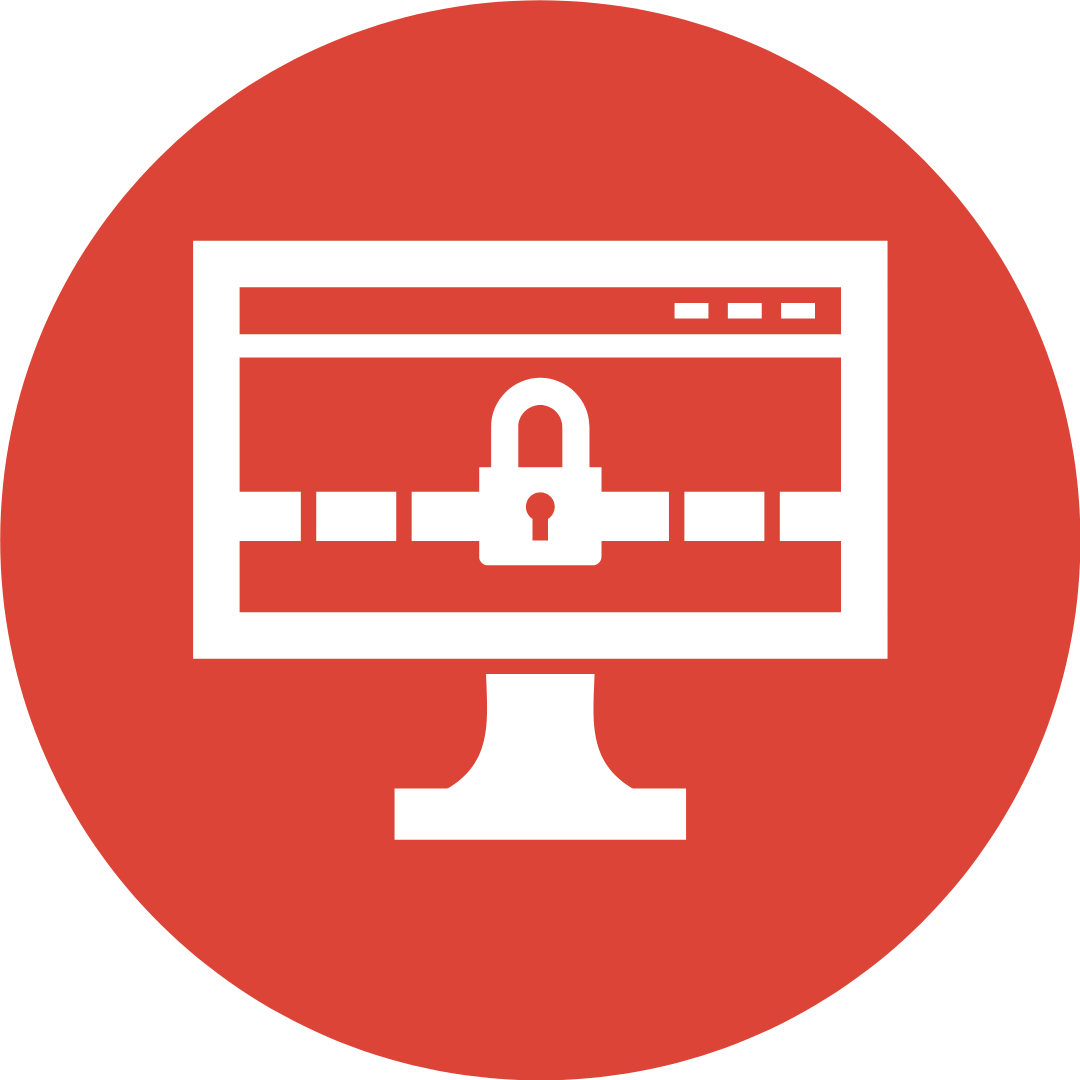The Protection of Coinsurance

Securing appropriate insurance for your business and property can be enough of a process on its own. So what does the concept of coinsurance represent? Nothing less than protection for both the insured and the insurance provider.
Let’s start with defining our terms. Coinsurance is a property coverage provision set by your insurer that requires you to carry coverage for a certain percent of your property's value. That way, your insurer can be sure you have adequate coverage if you need to make a claim, and it can ensure that its resources are adequate to cover that claim.
In a typical commercial property insurance policy, a coinsurance clause ensures that you carry adequate coverage to protect your assets. For instance, for an office building valued at $200,000, you would need at least $200,000 in property insurance coverage. If your policy has a clause with a coinsurance percentage of at least 80%, that means you must insure the building for at least $160,000. If you purchase less coverage, the insurance company may not pay out the full value of your damages, even if they fall within the limits of your policy.
Say you file a claim after a fire causes $100,000 worth of property damage. Your property insurance policy has a limit of $150,000 and a $5,000 deductible. Per your coinsurance clause, you were required to purchase at least $160,000 in coverage. Because you failed to meet your coinsurance percentage of 80%, you will face additional costs as determined by the ratio of the amount you carried divided by the amount that was required: $150,000 / $160,000 = 0.937. So if your loss was $100,000, your insurer will pay $93,700 minus your $5,000 deductible. Your total costs will end up being $11,300.
Not every insurance company includes a coinsurance clause in its policies. However, those that do require coinsurance typically have three reasons for doing so:
- To ensure clients have adequate coverage.
- To protect their pool of resources to better handle real-world claim situations.
- To encourage accurate assessment and underwriting.
The bottom line? When you’re required to meet coinsurance limits and do so, you’re more likely to make an accurate assessment of the value of your assets, which protects the insurance provider and you in the long term. Contact the professionals at The Reschini Group for more information on coinsurance and how it can apply to your business coverage.
Copyright 2023 The Reschini Group
The Reschini Group provides these updates for information only, and does not provide legal advice. To make decisions regarding insurance matters, please consult directly with a licensed insurance professional or firm.
Don't Rely on Luck to Get Through the Next Health Crisis

Some people live by the credo, “I’d rather be lucky than good.” But as the Covid-19 pandemic taught us, it’s foolish to rely on luck alone to manage your business through a major health crisis. Complete and comprehensive preparation must take precedence.
Covid became a true turning point for many workplaces. The Human Resources function now is expected to understand public health challenges swiftly and manage them efficiently. So, how to prepare? Here are four steps to success:
- Assess the Risk to the Organization
Employers must remain updated on federal and local health guidance to help inform organizational strategies, while also considering questions like: Are employees at a heightened risk by being in the workplace during this crisis? What safety protocols will keep employees safe? - Adapt Quickly
Based on the risk assessment, employers must be prepared to adapt quickly, ensuring that safeguards in place don’t force employees to choose between their jobs and their health. - Communicate Thoroughly
At every stage, employers should keep employees in the loop. This means sharing the outcome of the risk assessment and clearly communicating any new workplace protocols. Employees should never have to wonder how their workplace is handling a crisis. - Embrace Change
During the early months of the pandemic, it took far too long for some businesses to adapt. Employers should be ready to make these decisions swiftly, and must embrace the changing landscape. This might mean having some employees work remotely while others remain in the workplace. Employers should think about such contingencies and be prepared to follow through if a public health crisis necessitates it.
Responding to the next health crisis will be much easier when you have planned and prepared ahead of time. Don’t leave it to luck. There’s too much at stake. Reach out to the Benefits team at The Reschini Group for more workplace guidance.
Copyright 2023 The Reschini Group
The Reschini Group provides these updates for information only, and does not provide legal advice. To make decisions regarding insurance matters, please consult directly with a licensed insurance professional or firm.
Surge in Cyber Attacks Accelerates Need to Secure Coverage

A sharp rise in the number and size of ransomware losses over the past three years is changing the availability and cost of cybersecurity insurance coverage, according to the Insurance Leadership Forum. Annual cyber liability rates have increased more than 40% in recent years, in fact.
Insurance providers are carefully managing the growing risk, with some scaling back coverage options for business customers and others continuing to make coverage widely available because the threat is both ever-present, growing and evolving rapidly.
Some insurers continue to make this coverage available to customers with whom they have a wider relationship. Certain insurers have elected to only write cyber liability for companies with less than $100 million in revenue to reduce the insurer’s exposure.
These factors combine to make the need for cybersecurity insurance more urgent than ever, and to secure adequate coverage at reasonable rates. Contact the professionals at The Reschini Group to learn more about available cybersecurity coverage that’s right for your business.
Copyright 2023 The Reschini Group
The Reschini Group provides these updates for information only, and does not provide legal advice. To make decisions regarding insurance matters, please consult directly with a licensed insurance professional or firm.
Making a Disaster Worse: Insufficient Documentation When Filing a Claim

Floods, fires, tornadoes. Business owners purchase insurance to protect their property and people against these types of disasters. But what happens when, should the worst occur, you can’t adequately prove what that property was worth, or the financial impact your people are suffering?
It may sound like the most obvious point in the world, but it’s important to have accurate values – and the documentation to prove them to an insurance adjuster. Some good news is that this is not so much an issue impacting your premiums, but it can become a major issue when filing a claim to recover your losses.
The Insurance Information Institute recommends the following:
-- Collect any relevant business records that you will need to prove the value of damaged equipment, inventory or structures that you are including in your business insurance claim. Gather all financial documents including tax returns, monthly sales tax returns, business contracts, budgets, financial statements and other documents pertinent to calculating the projected income of your business.
-- If the business is forced to close down, you will need to provide information on the cost of conducting business from a temporary location, detailed records of business activity, and a list of expenses that have continued while your business has been suspended such as advertising, utilities, etc. Loss of or damage to cars, vans, trucks or specialty vehicles, which can hamper your ability to operate your business, should also be reported.
One of the smartest and easiest ways for a business owner to limit risk is to make sure you know – and can prove – what the various elements that make up your business are worth.
Contact the professionals at The Reschini Group to learn more about insured-to-value coverage for your enterprise.
Copyright 2023 The Reschini Group
The Reschini Group provides these updates for information only, and does not provide legal advice. To make decisions regarding insurance matters, please consult directly with a licensed insurance professional or firm.
Offering Coverage for Employee Mental Health
 Among the many lasting effects of the COVID-19 pandemic is the impact on mental health. Months of isolation, coupled with anxiety about job security and physical health, followed by the economic stress from inflation and supply chain issues, have helped to fuel lingering mental health challenges for millions – including your employees.
Among the many lasting effects of the COVID-19 pandemic is the impact on mental health. Months of isolation, coupled with anxiety about job security and physical health, followed by the economic stress from inflation and supply chain issues, have helped to fuel lingering mental health challenges for millions – including your employees.
In fact, while more than one in five Americans have diagnosable mental disorders at some point in their lives, only about half of them receive professional mental health treatment. One main reason – seeking access to such treatment – can be attributed to whether the person’s employer offers mental health benefits.
Under the Affordable Care Act, non-grandfathered health plans in the iCndividual and small group markets are required to cover mental and behavioral health treatments as one of the 10 essential health benefits. That means most fully insured group health plans sponsored by small employers (typically those with up to 50 employees) must include coverage for mental health benefits. Also, health plans must comply with the Mental Health Parity and Addiction Act of 2008, which prohibits group health plans (and health insurance issuers providing mental health and substance use disorder benefits) from imposing less favorable benefit limitations on those benefits than what they impose on surgical and medical care.
Beyond the legal and policy compliance considerations, however, providing adequate mental health benefits also makes economic sense. More employers have come to recognize that the cost of lost productivity due to employees suffering from mental health issues exceeds the cost of providing adequate mental health benefits coverage.
Options available to employers to help address these issues include:
- Using Employee Assistance Programs to remove the stigma of mental health treatment and to help offset the cost of treatment, so that more employees seek help.
- Making mental health screenings more widely and easily available to employees.
- Offering employee education initiatives.
- Enlisting the help of primary care physicians to bring mental health considerations into the overall picture of assessing employee health.
The U.S. Department of Labor has more information on mental health at www.dol.gov. You can also contact the Benefits team at The Reschini Group for more information and guidance on this important topic.
Copyright 2023 The Reschini Group
The Reschini Group provides these updates for information only, and does not provide legal advice. To make decisions regarding insurance matters, please consult directly with a licensed insurance professional or firm.
Joe Reschini Named to Top 100 List
Joe Reschini, President of The Reschini Group and CEO of Evergreen Insurance was named one of Pennsylvania Business Central’s 2022 Top 100 people in business and economic development. To read more about Joe and the Top 100, click here
Joe Reschini Named to Top 100 List
Joe Reschini, President of The Reschini Group and CEO of Evergreen Insurance was named one of Pennsylvania Business Central’s Top 100 people in business and economic development. To read more about Joe and the Top 100, click here
Joe Reschini Named to Top 100 List
Joe Reschini, President of The Reschini Group and CEO of Evergreen Insurance, was named one of Pennsylvania Business Central’s 2023 Top 100 people in business and economic development. To read more about Joe and the Top 100, click here.
CEO Awareness, Involvement Crucial in Cybersecurity
 While it may be tempting to leave the complex, mysterious world of cybersecurity to “the experts,” business leaders cannot fall back on that handy escape hatch any longer. They need to be aware and involved, even to the point of elevating cyber reporting to the CEO directly. According to the federal Cybersecurity and Infrastructure Security Agency*, here are some practical steps that leaders would be wise to follow:
While it may be tempting to leave the complex, mysterious world of cybersecurity to “the experts,” business leaders cannot fall back on that handy escape hatch any longer. They need to be aware and involved, even to the point of elevating cyber reporting to the CEO directly. According to the federal Cybersecurity and Infrastructure Security Agency*, here are some practical steps that leaders would be wise to follow:
- CEOs should ask the following questions about potential cybersecurity threats:
How could cybersecurity threats affect the different functions of my business, including areas such as supply chain, public relations, finance, and human resources? - What type of critical information could be lost (e.g., trade secrets, customer data, research, personally identifiable information)?
- How can my business create long-term resiliency to minimize our cybersecurity risks?
- What kind of cyber threat information sharing does my business participate in? With whom does my business exchange this information?
- What type of information sharing practices could my business adopt that would help foster community among the different cybersecurity groups where my business is a member?
What can CEOs do to mitigate cybersecurity threats?
- Elevate cybersecurity risk management discussions to the company CEO and the leadership team. Executives should construct policy from the top down to ensure everyone is empowered to perform tasks related to reducing cybersecurity risk.
- Implement industry standards and best practices rather than relying solely on compliance standards or certifications. Compliance standards and regulations (Federal Information Security Modernization Act) provide guidance on minimal requirements. Businesses should strive to go beyond the minimum, however.
- Evaluate and manage organization-specific cybersecurity risks. Ask the questions necessary to understand your security planning, operations, and security-related goals.
- Ensure cybersecurity risk metrics are meaningful and measurable. For example, reducing the days it takes to patch a vulnerability to directly limit risk to the organization.
- Develop and exercise cybersecurity plans and procedures for incident response, business continuity, and disaster recovery. It is critical that organizations test their incident response plans across the whole organization, not just in the IT environment.
- Retain a quality workforce. It is important to have people who can identify the proper tools for your organization, since new cybersecurity threats are constantly appearing.
- Maintain situational awareness of cybersecurity threats. Subscribe to notifications on emerging cybersecurity threats (e.g., National Cyber Awareness System products, MITRE Common Vulnerability Exposures, CERT Coordination Center Vulnerability Notes) and subscribe to the Homeland Information Sharing Network.
Of course, making sure your cybersecurity insurance coverage is sufficient and current remains vitally important, as well. The professionals at The Reschini Group can help.
* https://www.cisa.gov/tips/st18-007
Copyright 2023 The Reschini Group
The Reschini Group provides these updates for information only, and does not provide legal advice. To make decisions regarding insurance matters, please consult directly with a licensed insurance professional or firm.
Joe Totten Joins the Reschini Group
Joseph C. Totten III is joining The Reschini Group and Evergreen Insurance as Chief Revenue Officer. Joe will be responsible for overseeing the management and growth of current client relationships as well as supporting the firm’s long-term growth initiatives. Prior to joining the Reschini Group, Joe was the Vice President for a large national broker in Pittsburgh.
“Joe’s impact on our organization will be significant,” said Joe Reschini, President of The Reschini Group and Chief Executive Officer of Evergreen Insurance. ” Joe’s experience will help us reach a new level of service for our clients and growth for The Reschini Group.”
“This is a great opportunity to help build on the legacy of a historic company,” said Joe Totten. “They are a leader in the industry and I look forward to working with the teams in Pittsburgh and Indiana..”
Joe Totten is a graduate of Central Catholic High School and Duquesne University. He will work out of the firm’s Pittsburgh office but will be meeting with clients throughout Pennsylvania. Connect with Joe Totten on Linkedin.
The Reschini Group Launches New Website
The Reschini Group’s website, www.reschini.com received an exciting upgrade and redesign over the holiday weekend.
The new site features a dynamic responsive homepage with clickable links to the most important content pages and functionality you may use for your customer service or informational needs:
- Benefits Bookcase
- Zywave Client Portal
- InsurLink
- Property and Casualty information
- Employee Benefits information
- Latest Blog page
- Careers page
The website also features resources about many key issues your organization may face regarding Property and Casualty, Employee Benefits, or Cybersecurity issues. Plus, the site archives the Reschini blog – a useful library of pertinent information about recent issues in the market and economy.
Take a moment to look at the new site and let me know what you think!
Leaders Cite Major Cyber Concerns
 While a majority of U.S. business executives rank cyber risk as their top organizational concern, fewer than half have adopted even basic preventive measures, according to results of an industry survey.
While a majority of U.S. business executives rank cyber risk as their top organizational concern, fewer than half have adopted even basic preventive measures, according to results of an industry survey.
Cyber risk has risen to become the top concern in the U.S. and few risk experts believe governments are equipped to handle the threat. Among 1,200 executives who participated in the survey, 59% said they worry some or a great deal about cyber, and 25% said their company has been a cyber victim, up 150% since 2015.The top three specific concerns cited by survey respondents included security breaches, system glitches, and unauthorized access to bank accounts.Yet only 61% of these leaders said they felt extremely or very confident in their company’s cyber practices. The survey found that 43% said their company has a written business continuity plan in the event of a cyberattack, and 48% said their company has adopted multifactor authentication to mitigate the risk.The need for heightened attention and action regarding cyber protection has only increased with the rise of employees working remotely. An easy way to begin would be to require simple preventative measures, such as requiring multifactor authentication – as in using a one-time dedicated passcode as a secondary verification of identity – to gain access to websites or files.They say the first step in getting yourself out of a hole is to stop digging. The wise business leader acknowledges and addresses issues before they become problems. If the state of your cyber security preparation is troubling you, don’t wait to find out how problematic it can become. Invest the time and resources to fortify your protection now.Contact the professionals at The Reschini Group for guidance on cyber security.
Copyright 2022 The Reschini GroupThe Reschini Group provides these updates for information only, and does not provide legal advice. To make decisions regarding insurance matters, please consult directly with a licensed insurance professional or firm.Source: https://www.businessinsurance.com/article/20210929/NEWS06/912344857?template=printer
New Address, New Terms of Coverage?
 As a business gains traction, achieves success and expands, it can outgrow its original location and facilities, making a move to a new, larger site necessary.
As a business gains traction, achieves success and expands, it can outgrow its original location and facilities, making a move to a new, larger site necessary.
Don’t forget to consult with an insurance professional as part of researching that new location, however. The results can be either advantageous or detrimental to your ongoing financial health.Any change in how a business operates – including where it positions its facilities, equipment, and personnel – requires an analysis of coverage. Physical location can be impacted – either positively or negatively – by factors including:
- The likelihood of severe weather, like hurricanes, windstorms, tornadoes, or hail.
- Does the property sit in a floodplain? Is flooding becoming more common due to the effects of climate change?
- Whether the area shows a statistical trend regarding crime, vandalism, and theft.
- The condition of existing infrastructure, such as plumbing, electrical wiring, and HVAC, as these help to determine the chances of causing fire or water damage.
Similarly, a new service or line of products pursued as part of a business’ expansion plans also introduce new variables in terms of number of employees, equipment needed, safety procedures, and much more – all of which need to be incorporated into a package providing the best insurance coverage possible.“New” in the world of business should mean “better.” To safeguard your investment on the road to improving your overall performance, make sure you have the right insurance protections in place, as well.Contact the professionals at The Reschini Group for more information.
Copyright 2022 The Reschini GroupThe Reschini Group provides these updates for information only, and does not provide legal advice. To make decisions regarding insurance matters, please consult directly with a licensed insurance professional or firm.
SEC Watching Cyber Protections Closely
 The U.S. Securities and Exchange Commission has begun to crack down on companies it deems to have breached securities laws by making inadequate cybersecurity disclosures, a policy that shows no sign of slowing down.
The U.S. Securities and Exchange Commission has begun to crack down on companies it deems to have breached securities laws by making inadequate cybersecurity disclosures, a policy that shows no sign of slowing down.
As a result, businesses have been advised to establish clear internal communications strategies on cybersecurity issues, and to also examine their directors and officers liability insurance and cyber liability policies to determine whether they have adequate coverage if the issue arises.Some SEC cyber disclosure actions have resulted in penalties of up to $1 million. Industry experts attribute the increased attention on cyber intrusion preparation to the reality of cyberattacks in the economy today, and an alarming lack proper preparation on the part of organizations to fight it.The agency will likely become even more aggressive in the future, as the SEC is expected to have less tolerance for organizations that don’t take the basic steps to protect sensitive data.Companies should develop incident response plans that include how to deal with a vulnerability’s discovery before it becomes an intrusion, then make sure the infrastructure is in place to address that vulnerability. Organizations need to get a clear picture of their own cybersecurity environment and communicate regularly about roles and responsibilities. Also, a well-constructed D&O policy should cover investigation costs in the event of a breach.It pays to invest in solid cyber security plans, whether or not the SEC or any other entity is looking for problems. It’s just good business these days. Contact the professionals at The Reschini Group for guidance on cyber security.
Copyright 2022 The Reschini GroupThe Reschini Group provides these updates for information only, and does not provide legal advice. To make decisions regarding insurance matters, please consult directly with a licensed insurance professional or firm.Source: https://www.businessinsurance.com/article/20210831/NEWS06/912344206?template=printart
Changes Afoot: Who Is Really Covered on Your Policy?
 In life, as in business, education, and any large organization, the only thing that doesn’t change is that everything changes.
In life, as in business, education, and any large organization, the only thing that doesn’t change is that everything changes.
New operational subsidiaries are formed, people in key leadership positions leave and arrive, school districts see new clubs and sports teams rise and fall. Nothing wrong with any of this. It’s the natural ebb and flow. It’s how the world works.The sticky part comes in, however, when you assume the insurance coverage in place extends to any or all of those modifications. Or worse, you don’t think of that question at all.The old adage about why it’s dangerous to assume certainly applies. A policy is written at a moment in time, under specifications and structures that exist then. Unless provisions have been written into that policy to automatically include new elements to the entity being covered, they may not – and probably will not.Always err on the side of caution and communication. Check with your insurance provider any time the terms, shape, size, or any other variable impacts your organization. When changes are afoot, make sure you know who and what is covered under your policy – so that any necessary adjustments can be made before costly surprises arise.Contact the professionals at The Reschini Group for more information.
Copyright 2022 The Reschini GroupThe Reschini Group provides these updates for information only, and does not provide legal advice. To make decisions regarding insurance matters, please consult directly with a licensed insurance professional or firm.
Benefits Blog: HSA 2022 Compliance Limits
 A clear understanding of the rules up-front helps to avoid problems down the road. This can be especially true when it comes to government programs and the tax implications they represent. For example – Health Savings Accounts (HSA), a popular type of tax-advantaged medical savings account available to individuals enrolled in high deductible health plans (HDHPs).
A clear understanding of the rules up-front helps to avoid problems down the road. This can be especially true when it comes to government programs and the tax implications they represent. For example – Health Savings Accounts (HSA), a popular type of tax-advantaged medical savings account available to individuals enrolled in high deductible health plans (HDHPs).
Individuals can use HSAs to pay for expenses covered under the HDHP until their deductible has been met, or they can use their HSAs to pay for qualified medical expenses that are not covered under the HDHP, such as dental or vision expenses.HSAs provide a triple tax advantage—contributions, interest and earnings, and amounts distributed for qualified medical expenses are all exempt from federal income tax, Social Security/Medicare tax and most state income taxes. But because of an HSA’s potential tax savings, federal tax law includes strict rules for HSAs, including limits on annual contributions and HDHP cost sharing. These limits, which can vary based on whether an individual has self- only or family coverage under an HDHP, include:
- The maximum HSA contribution limit;
- The minimum deductible amount for HDHPs; and
- The maximum out-of-pocket expense limit for HDHPs.
Eligible individuals with self-only HDHP coverage will be able to contribute $3,650 to their HSAs for 2022, up from $3,600 for 2021. Eligible individuals with family HDHP coverage will be able to contribute $7,300 to their HSAs for 2022, up from $7,200 for 2021. Individuals who are age 55 or older are permitted to make an additional $1,000 “catch-up” contribution to their HSAs. The minimum deductible amount for HDHPs remains the same for 2022 plan years ($1,400 for self-only coverage and $2,800 for family coverage). However, the HDHP maximum out-of- pocket expense limit increases to $7,050 for self-only coverage and $14,100 for family coverage.Employers that sponsor HDHPs should review their plan’s cost-sharing limits (minimum deductibles and maximum out-of-pocket expense limit) for 2022. Also, employers that allow employees to make pre-tax HSA contributions should update their plan communications for the increased contribution limits.Contact the Benefits Team at The Reschini Group for more information.
Copyright 2022 The Reschini GroupThe Reschini Group provides these updates for information only, and does not provide legal advice. To make decisions regarding insurance matters, please consult directly with a licensed insurance professional or firm.
Benefits Blog: Health FSAs Feature Carry-Over Option
 Sometimes, leftovers can be more satisfying than when the meal was first served. You somehow appreciate it more, when you can enjoy something that wasn’t used up the first time.
Sometimes, leftovers can be more satisfying than when the meal was first served. You somehow appreciate it more, when you can enjoy something that wasn’t used up the first time.
Now, that satisfying carry-over feeling extends to Health Flexible Spending Accounts (FSA).
A Health FSA is an employer-sponsored account that employees can use to pay for or reimburse their qualifying medical expenses on a tax-free basis, up to the amount contributed for the plan year. Typically, Health FSAs are subject to a “use-or-lose” rule that generally requires any unused funds at the end of the plan year (plus any applicable grace period) to be forfeited.As an exception to this use-or-lose rule, however, employers may allow participants to carry over up to $500 in unused funds into the next year to pay or reimburse medical expenses incurred during the entire plan year to which it is carried over. Also, the carry-over amount does not count toward the Affordable Care Act’s (ACA) limit on employees’ salary reduction contributions to a health FSA.For this purpose, the remaining unused amount as of the end of the plan year is the amount unused after medical expenses have been reimbursed at the end of the plan’s run-out period for the plan year. For plan years beginning on or after Jan. 1, 2022, the limit on Health FSA carryovers increases from $500 to $570.The IRS has provided the following rules for Health FSA carryovers:
- A Health FSA may:
- Specify a lower amount as the maximum (and has the option of not permitting any carryover at all);
- Permit carryovers only if it does not also incorporate the grace period rule. The carryover may be used to pay or reimburse medical expenses incurred during the entire plan year to which it is carried over;
- Limit the ability to carry over unused amounts to a maximum period (for example, a health FSA can limit the ability to carry over unused amounts to one year); and
- A cafeteria plan is not permitted to allow unused amounts relating to a health FSA to be cashed out or converted to any other taxable or nontaxable benefit.
See how the Health FSA carry-over option can apply to your business and provide an added benefit for your employees. Contact the Benefits Team at The Reschini Group for more information.
Copyright 2022 The Reschini GroupThe Reschini Group provides these updates for information only, and does not provide legal advice. To make decisions regarding insurance matters, please consult directly with a licensed insurance professional or firm.
Restricting the Flow: Cyber Attacks Impact Supply Chain
Cyber threats have the potential to impact all facets of the supply chain.
An attack against the Colonial Pipeline in the U.S. in May 2020 illustrated how vulnerable critical infrastructure can be as an attractive target for cybercriminals and even other nations hostile to the American economy. The attack – made possible through a single password breach, as disclosed later – shut key conduits delivering fuel from Gulf Coast refineries to major East Coast markets.According to industry sources, shipping and logistics companies saw three times as many ransomware attacks in 2020 as in 2019. A spike in malware, ransomware, and phishing emails during the pandemic helped drive a 400% increase in attempted cyberattacks against shipping companies through the first months of 2020, as well.While shipping represents a major element of overall supply chain operations, the looming threat of cyber attacks remains just as present and prevalent in every other link of that chain.As the world economy continues to regain its footing in the wake of the coronavirus pandemic, supply chain issues have contributed to inflationary pressures and the less-than-rapid recovery many had hoped to see. Preventing malicious actors from further disrupting the supply chain remains a key priority.Cybersecurity impacts every business, regardless of size or location or industry. Make sure your business deploys all preventative measures possible, and have regular reviews of your cybersecurity insurance coverage to protect against potential losses.Contact the professionals at The Reschini Group for more information.Copyright 2022 The Reschini Group
Waiver of Subrogation: Added Protection, Added Costs

Subrogation occurs when an insurer pays their insured for a loss caused by a third- party, and then attempts to recoup their payout by making a claim against the responsible third party.
For instance, if you’re in a car accident and it was the other party’s fault, your insurer pays for repairs to your vehicle and then pursues the other person’s insurance company for the loss. In your insurance policy, which is a contract between you and your insurance carrier, you agreed to allow the carrier to subrogate for any paid loss.In a typical business contract, one business may ask another business to waive its rights of subrogation because the first business doesn’t want to be held responsible for a loss. When agreed to in such a contract, it prevents the business, and its insurer, who has agreed to waive their right, from seeking a share of the damages paid from the other party, even if they are at fault.But be aware that when a business gives up its right to recover any losses, it increases the insurer’s risk and transfers responsibility to the insured and its insurer for sometimes uncontrollable losses. This can lead to unnecessary loss history and potentially increased insurance costs.Conducting regular contractual reviews with your insurer agent can easily point out these exposures and help to you to understand and sometimes negotiate this requirement out of your risk profile.Contact the professionals at The Reschini Group for more information.Copyright 2022 The Reschini GroupThe Reschini Group provides these updates for information only, and does not provide legal advice. To make decisions regarding insurance matters, please consult directly with a licensed insurance professional or firm.

